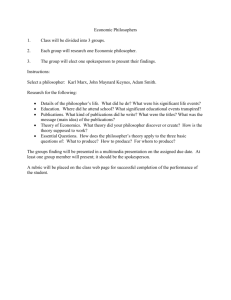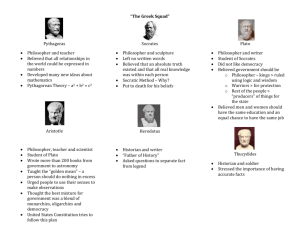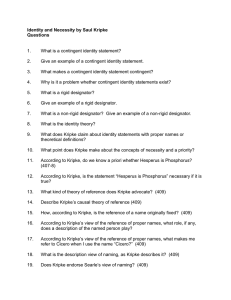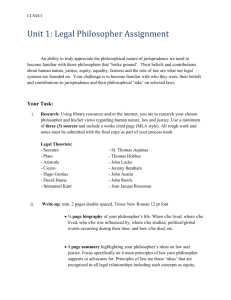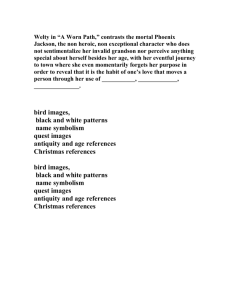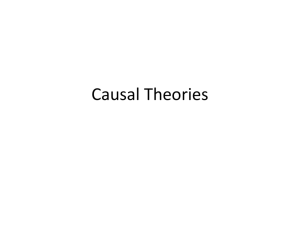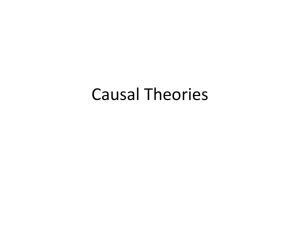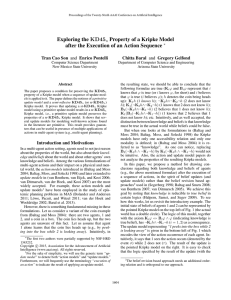Preface
advertisement
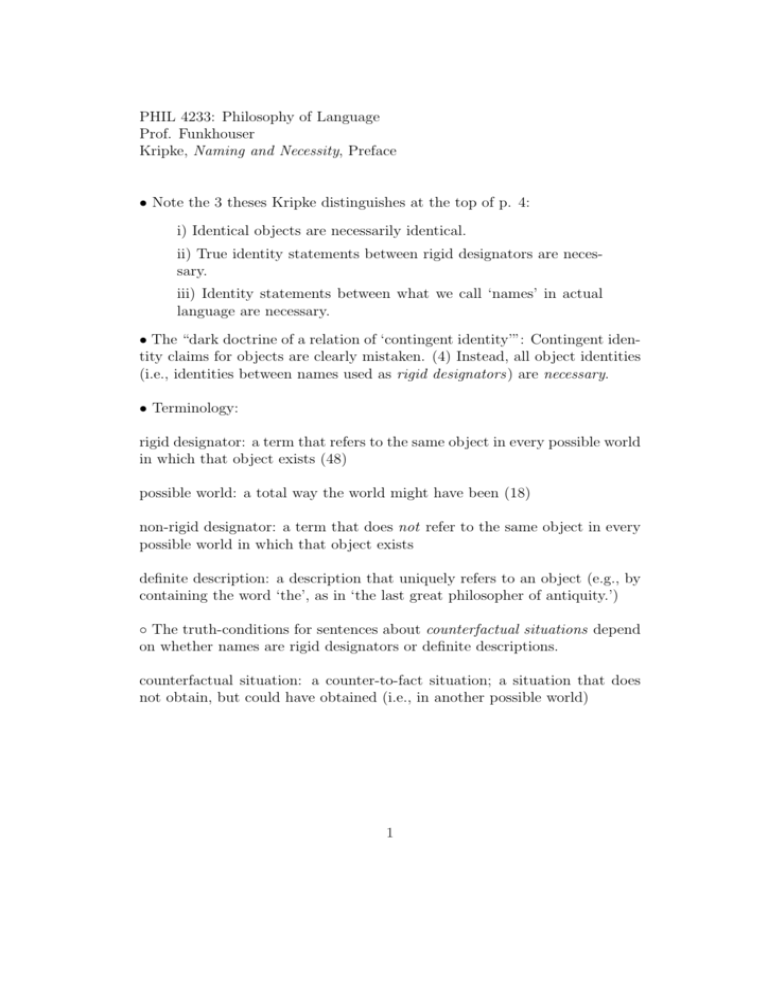
PHIL 4233: Philosophy of Language Prof. Funkhouser Kripke, Naming and Necessity, Preface • Note the 3 theses Kripke distinguishes at the top of p. 4: i) Identical objects are necessarily identical. ii) True identity statements between rigid designators are necessary. iii) Identity statements between what we call ‘names’ in actual language are necessary. • The “dark doctrine of a relation of ‘contingent identity’”: Contingent identity claims for objects are clearly mistaken. (4) Instead, all object identities (i.e., identities between names used as rigid designators) are necessary. • Terminology: rigid designator: a term that refers to the same object in every possible world in which that object exists (48) possible world: a total way the world might have been (18) non-rigid designator: a term that does not refer to the same object in every possible world in which that object exists definite description: a description that uniquely refers to an object (e.g., by containing the word ‘the’, as in ‘the last great philosopher of antiquity.’) ◦ The truth-conditions for sentences about counterfactual situations depend on whether names are rigid designators or definite descriptions. counterfactual situation: a counter-to-fact situation; a situation that does not obtain, but could have obtained (i.e., in another possible world) 1 • The defender of the definite description analysis (e.g., Russell) sees a name as shorthand for a description that uniquely refers to an individual. Kripke applies this theory to an example: (1) ‘Aristotle was fond of dogs.’ is analyzed as (3) ‘Exactly one person was last among the great philosophers of antiquity, and any such person was fond of dogs.’ (6–7) [Note how this analysis assumes that Aristotle was the last great philosopher of antiquity. If you do not think this is true of Aristotle, you can substitute in a different description.] ◦ But, notice what is required to make this sentence true in the counterfactual situations in which someone else is the last great philosopher of antiquity. The sentence ‘Aristotle was fond of dogs.’ is true in these counterfactual situations if, and only if, that other person who is the last great philosopher of antiquity was fond of dogs. As Kripke puts it: With respect to a counterfactual situation where someone other than Aristotle would have been the last great philosopher of antiquity, Russell’s criterion would make that other person’s fondness for dogs the relevant issue for the correctness of (1)! (7) ◦ On the rigid designator view of names the truth-conditions for this sentence in counterfactual situations will never involve the preferences of other people. It is always this person’s (Aristotle’s!) preferences that are relevant. ◦ Here is another of Kripke’s intuition tests in favor of the rigidity thesis for proper names: Take some definite description that notes some of your salient features. Now consider the sentence: “[Your name] could have been a rodeo star.” This sentence is not made true by the possibility of someone else meeting that definite description, plus being a rodeo star. (See Kripke, pp. 12–13.) But, such a possibility would make the sentence true on the descriptionist’s analysis. • Why, then, did Russell offer a descriptionist theory? 1) He did not consider modal questions. 2) He thought it was needed to account for informative (a posteriori ) identity statements like ‘Superman = Clark Kent’. • On pages 10–13 Kripke talks about scope distinctions. Let me illustrate what he is talking about by applying these distinctions to his example: 2 ‘It might have been the case that the greatest philosopher of antiquity was not a philosopher.’ (13) One operator (such as the modal operator, negation, etc.) has wider scope than another if the scope of the former includes the scope of the latter. For example, in ‘¬(A v B)’, ‘¬’ has wider scope than ‘v’. Kripke’s example exhibits a scope ambiguity. (This is the ambiguity that makes for the de re/de dicto distinction.) Which has wider scope, the definite description ‘the greatest philosopher of antiquity’ (which is an existential quantification) or the modal operator expressed by ‘it might have been the case that’ ? To take the description as having wider scope is to interpret the sentence as saying: ∃!x [(GPAx ) and ♦(¬Px )] [Here ‘∃!x ’ means ‘there exists a unique object x ’, ‘GPA’ means ‘is the greatest philosopher of antiquity’, and ‘P’ means ‘is a philosopher.’] If we take the modal operator to have the wider scope, we interpret the sentence as follows: ♦∃!x(GPAx and ¬Px ). Only the former interpretation is plausibly true. (The former interpretation is the de re reading of the sentence.) • Kripke’s comments about possible worlds: ◦ The dice example from p. 16: We do not need a way to distinguish between the situations in which ‘die A is 6 and die B is 5’ and ‘die A is 5 and die B is 6.’ (17) It is not appropriate to ask: “Well, how do you know it is die A that came up 6 in that possible world, and not die B?” These outcomes in the possible worlds are stipulated. ◦ These possible worlds do not really exist, as in another “dimension”. 3
